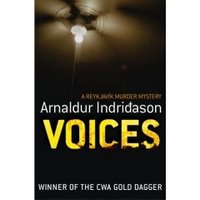
Jo Nesbo's The Redbreast has been translated out of sequence in this compelling Norwegian crime series--last year's Devil's Star is actually a later episode than The Redbreast. Reading this one is a bit of an odd experience, since the reader will already know things that the characters will not discover for a long time (and these are long complex novels at over 500 pages each). But each novel is independent, and has its own character. The Redbreast actually shares a number of things with Henning Mankell's early Wallander novel, The White Lioness. Both feature morose leading men who are cops (though there is more humor in Nesbo's book); both have a South African connection and both involve racism, assassination, and weapons that are the tools of professional assasins. Both also deal with international intrigue, conspiracies, and evil people--all of which are more normally the territory of thrillers rather than noir fiction or police procedurals. In both cases, it is the close attention of the author to the melancholy detective that saves the books from becoming simply throwaway thriller knockoffs. And Nesbo's character, Harry Hole, is more noir, perhaps, than Mankell's Wallander. Hole is an alcoholic, lonely man (like Wallander) but Hole falls further into the pit on a regular basis--without ever becoming the cliche "lonely, drunk detective." He continues to engage our attention even when he's wallowing in self-pity, because he's a fully realized character rather than a cardboard one (not that Wallander is cardboard, just that he doesn't fall so low, and for that reason sometimes his self-pity can be a bit irritating). And the global conspiracy plot that underlies The White Lioness and most other Wallander novels is not a prominent element of The Redbreast, in spite of its neo-Nazi, evil bureaucrat, and corrupt police elements. It remains local, of the streets, rather than global in its essence, and therefore more noir (I'm overusing that word but haven't come up with a good substitute: pulp? hard-boiled?). The story goes back to the Norwegian soldiers who enlisted in the SS and fought with the Nazis on the Western front (as well as the "latter-day saints" among those who played both sides or no sides until it was clear the Nazis would lose). Norway's wartime leader, Quisling, bas become the very name of treachery, so it's very interesting to get an inside look into the gray areas of the Nazi period there. And it's not only fanaticism but also love that drives both the murderous plot and the sympathetic surface tension of the novel. I won't go into any more detail, since the twists and turns of the story in this long complex novel are a big part of the pleasure of diving into it. Give Nesbo the time and attention that his work deserves, and you'll be richly rewarded.




